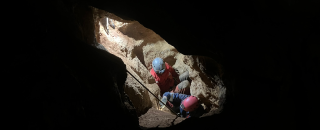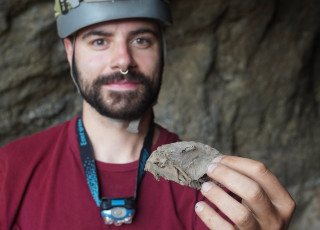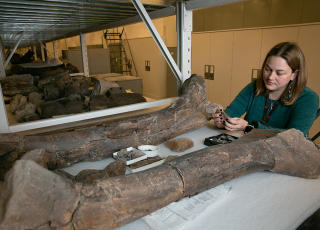Freshly Found Caves in South Africa Hold Clues to Pleistocene Past
By Jude Coleman
Fossils are the backbone—oftentimes literally—of researching the far past. And because most of human evolution took place throughout Africa, the fossils the continent holds are vital to piecing together early human history. The fossils there also tell other stories of ancient ecological history, and how humans fit into the lives of the animals and plants around them.
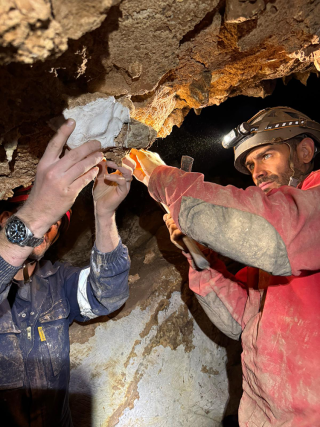
But most of the known fossil record comes from just a handful of sites across Africa, said Tyler Faith, Chief Curator and Curator of Paleontology at the Natural History Museum of Utah. That’s one reason why he's been squeezing his way through newly discovered caves in South Africa.
In 2022, Faith, a paleoecologist, set out to find a series of caves mentioned in a report from the 1980s. They were somewhere near the tip of South Africa in the Cango Valley, a region streaked with outcrops of limestone, a kind of rock that is often riddled with caves. But when he arrived, there were so many caves he couldn’t narrow down which were from the report. He came back several times over the years, documenting around two dozen caves.
“We found all these caves, and there appears to be a really rich fossil record within them,” said Faith. “Fossils are everywhere.”
The caves formed as water worked its way through the limestone over millions of years, eventually carving out tunnels and chambers in the rock. Throughout the caves’ existence, bones found their way inside. Sometimes, this was because a predator took its meals within the cave. Other times, remains were swept in with debris and water. And occasionally, an unlucky animal might have fallen in if a cave entrance or roof collapsed. Layers of sediment slowly built up over the bones, fossilizing them.
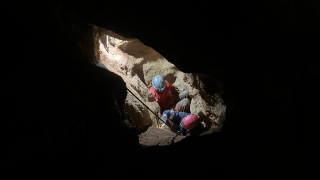
In June of 2025, Faith returned to the caves with a crew of researchers, ready to excavate. The work began with a tromp around, looking for cave entrances. Those entrances are inconspicuous to the untrained eye, sheltered by trees and vegetation. But their leafy concealment is one major tell that there’s a cave nearby, said Faith. Because the caves need flowing water to form, plants like trees and shrubs cluster around their opening to take advantage of the extra moisture.
The cave entrances are often just large enough for an adult to wriggle through. Once inside, the limestone gives way to a maze of tunnels that could require belly crawling through bat guano or descending tight, steep shafts to navigate. Cave ticks writhed among the piles of guano, waiting to sink their teeth into a passerby. And without marking which direction they came from, the spelunkers could easily get lost amidst the twists and turns.
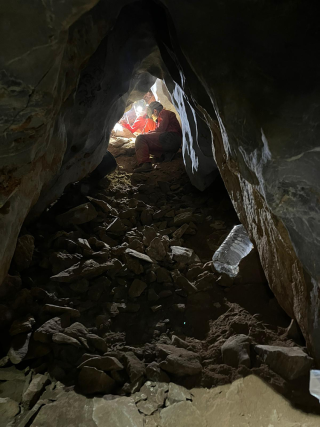
“It’s oppressively quiet and dark,” said Faith. “You start hearing things that aren’t there.”
Faith and his crew visited four caves on their trip, with two main goals: find fossils and try to peg an age to the things they found. There were fossils galore, sticking out of sediments adhering to ceilings and walls and erupting out of the ground. To further explore the caves’ potential, the team dug multiple test pits to see what lay beneath the surface. Ancient wildebeests, zebras, and unknown carnivores were among the finds. A molar, conspicuously like that of a human, was found poking out of a ceiling—but it’s not yet confirmed if the tooth is indeed from a hominid. Further hominid-like fossils emerged from other caves as well.
One of the most abundant animals the team found was an extinct mountain goat relative, likely similar to an ibex. The animal was first discovered around 25 years ago, but the known fossils were too incomplete to give it a name or to understand how it relates to other related species. But now, thanks to the Cango Valley caves, Faith has sufficiently complete fossils to properly document the species. The prize specimen will come from an individual lodged in sediments cemented to side of a cave, which was painstakingly removed with a hammer and chisel over several days.
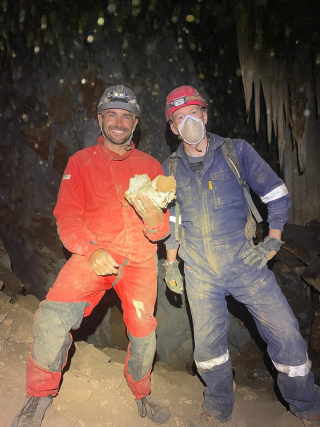
As for his second goal of dating the fossils, the Cango Valley research team won’t know any ages for sure until they can date samples of the caves’ flowstones. Flowstones are sheet-like mineral deposits that form as water flows through. Dating the flowstones sandwiching a layer of sediment gives researchers the minimum and maximum age of the fossils trapped in between. Faith’s hunch is that the fossils probably came from the Pleistocene Epoch, but that’s a wide window: a period of around 2.5 million to 11,700 years ago. “I strongly suspect they are more than 100,000 years old,” he said.
The caves’ age is great news for South Africa’s fossil record. Most fossils from southern parts of the country are from the last 100,000 years, while older fossils—those from the last several million years or so—are mostly isolated in the north, near Johannesburg. The Cango Valley cave project has the potential to beef up the older fossil record, said Faith. And, since the caves hold what seem to be hominid fossils, they could help fill in gaps about early human evolution and their place in the landscape.
For now, the caves Faith and his team explored are just the beginning. The sheer amount of subterranean time capsules in the area means decades of discoveries lay ahead. “There's zillions of caves in this area that I think are waiting for someone to pop into them and start working,” said Faith. “There's lifetimes of work to do in that valley.”
